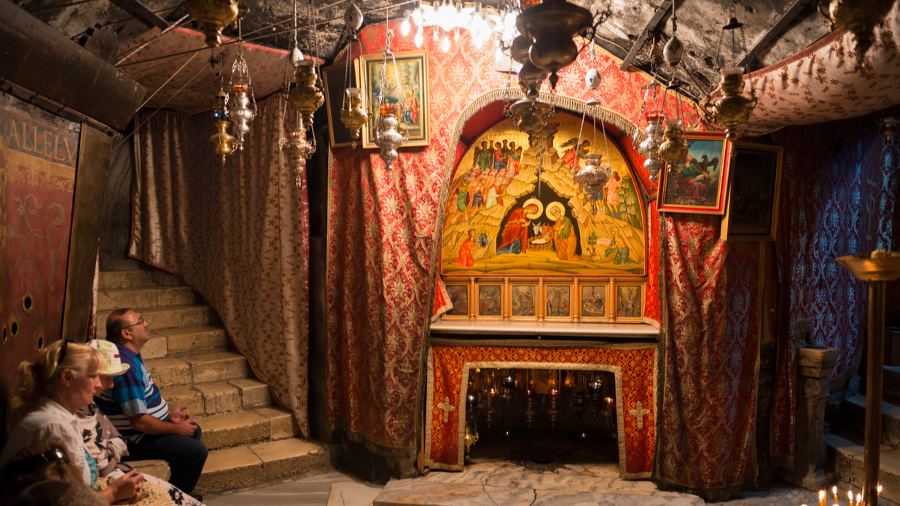The New Testament tells us Jesus was born in the little village of Bethlehem in Judea about six miles from Jerusalem.
If you visit Bethlehem today the centerpiece of the town is the ancient Church of the Nativity, controlled by the Greek Orthodox Church and for many decades in a ruinous state, it has been carefully restored and is now in the best condition it has been in for a very long time.
As you make your way down the South aisle you enter a couple of chapels that lead through an arch and down an ancient stairway down to the lower level. This lower level is the grotto–the cave that is the spot of the birth of Jesus Christ. On the floor is a metal star that marks the very spot and pilgrims kneel to kiss the place of the incarnation of the Son of God.
The skeptic will observe all this and nod knowingly and smile at the naïveté of the pilgrims. “Sure, sure. but really. The location where Jesus was born? I thought it was in a lowly stable. What’s all this about a cave? Oh, I get it, a wooden shed would have disappeared in time, but a cave remains part of the topography. That’s convenient isn’t it?”
Well, for believers it IS rather convenient, but it is also historical. I wrote this article earlier this year when I was on sabbatical in Jerusalem and Bethlehem. It explains why there are so many pilgrimage sites located in caves. In fact, this article from the Chicago Tribune explains how people still live in caves in the same Bethlehem area today.
The folks of Bethlehem at the time of Jesus’ birth would have lived in simple one or two room houses–usually built in front of a cave and they used the cave for storage and for stabling their animals. This article explains a bit more about the “inn” in Bethlehem and its relationship to the stable/cave.
OK, accepting that Jesus may have been born in a cave that was also a stable, how do we know that it was this cave–the one over which the Church of the Nativity was built? That’s where it gets interesting.
The shepherds of Bethlehem told the inhabitants of the town what had happened. (Lk 2:17) The locals would have remembered the location and passed the story on through the oral tradition. (I explain how this oral tradition works and why it is trustworthy in my book The Secret of the Bethlehem Shepherds) By the second century the location was venerated as a pilgrimage place, and in an attempt to quash the Christian devotions on the site, In the year 135, Emperor Hadrian had the site above the cave converted into a temple of the god Adonis.
In 420 St Jerome claimed that the cave had been consecrated to the worship of Adonis, and that a sacred grove was planted there in order to completely wipe out the memory of Jesus from the world.
315 AD is the famous date for the conversion of the Emperor Constantine. When his mother, the Empress Helena, came to the Holy Land in the early 4th century, the (now 200 year old) temple of Adonis erected by Hadrian marked the traditional spot in Bethlehem of Christ’s birth. The locals affirmed the story that the temple to Adonis had been built on the site of Jesus’ birth.
Rather than wiping out Christianity, we have Hadrian to thank for marking the spot and thus preserving it for posterity. God moves in a mysterious way!
The present church was dedicated in the year 339 and it has suffered the ravages of time and predations of armies and the rise and fall of empires. There are claims that the Church of the Nativity is the oldest Christian church in the world–appropriate since that is where it all started.
Go here for a special offer to get both of my Christmas books for a special price.







Leave A Comment
You must be logged in to post a comment.